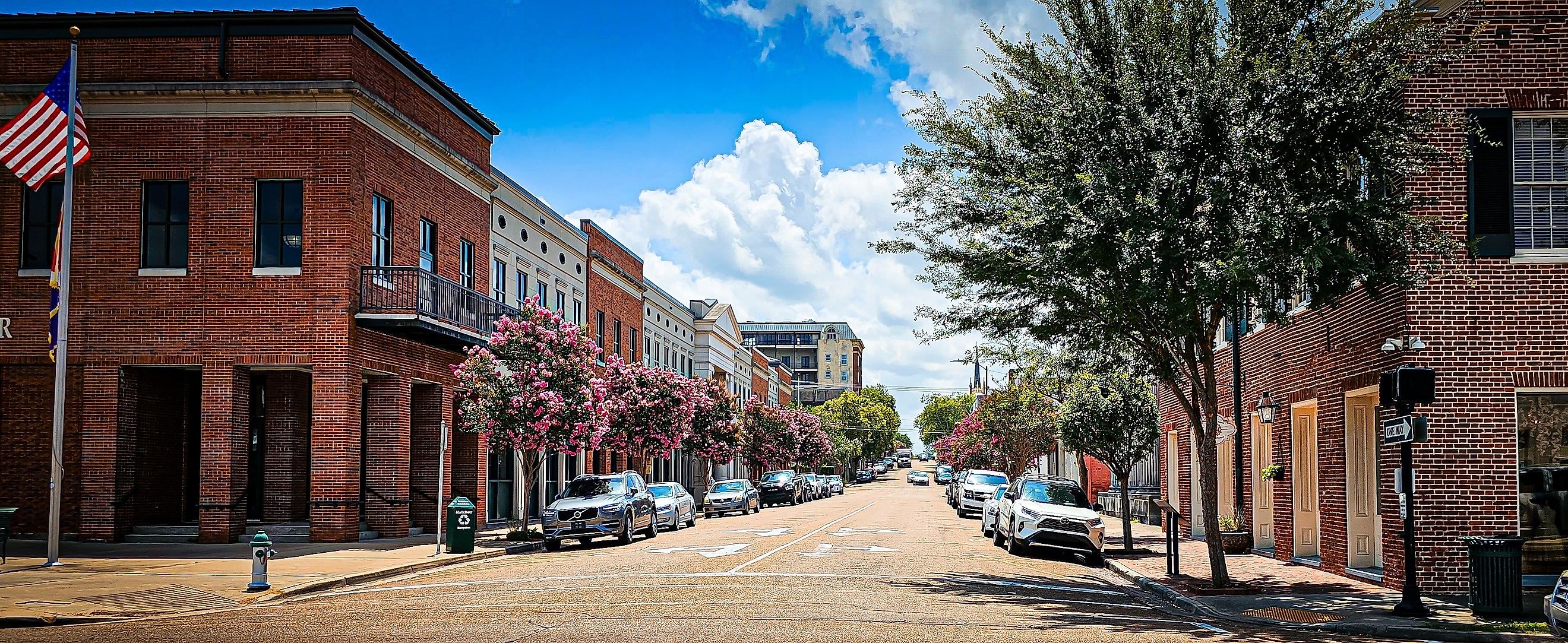
7 Old-World Towns to Visit in Mississippi
The deep southern state of Mississippi has had a long history of Old World settlement including Spanish, French, British and of course American towns. It became the 20th US state in 1817, making it one of the older states west of the original 13 colonies. It would famously join the Confederacy during the American Civil War, a war which would leave deep scars that can still be felt in Mississippi today. In these towns, visitors will discover the largest octagonal building in the United States, 19th century lighthouses, crucial Civil War battlefields, and picturesque antebellum homes. Here are seven Old-World towns in Mississippi to visit today.
Ocean Springs
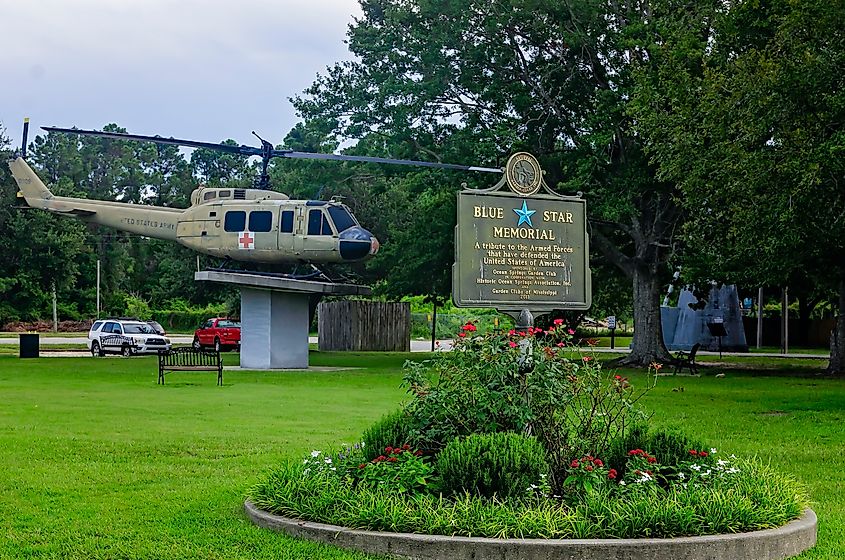
French Canadian explorer Pierre Le Moyne arrived in Ocean Springs in 1699 and set up a small settlement there. A fort established nearby, Fort Maurapas, would become the capital of larger French Louisiana. Over time, the area would pass under the British, Spanish, and the Americans. The town itself wouldn’t be incorporated until 1892. Visitors can see a recreation of Fort Maurapas at the Forst Maurepas Park, which also features a picturesque beach.
The area also hosts several historic sites ranging from the 1907 L&N Railroad Depot to the Mary C. O’Keefe Cultural Center, an 1927 schoolhouse that doubles as a history museum and art gallery. You'll even find a Prairie School structure called the Charnley-Norwood House, a summer cottage built in 1890.
Biloxi
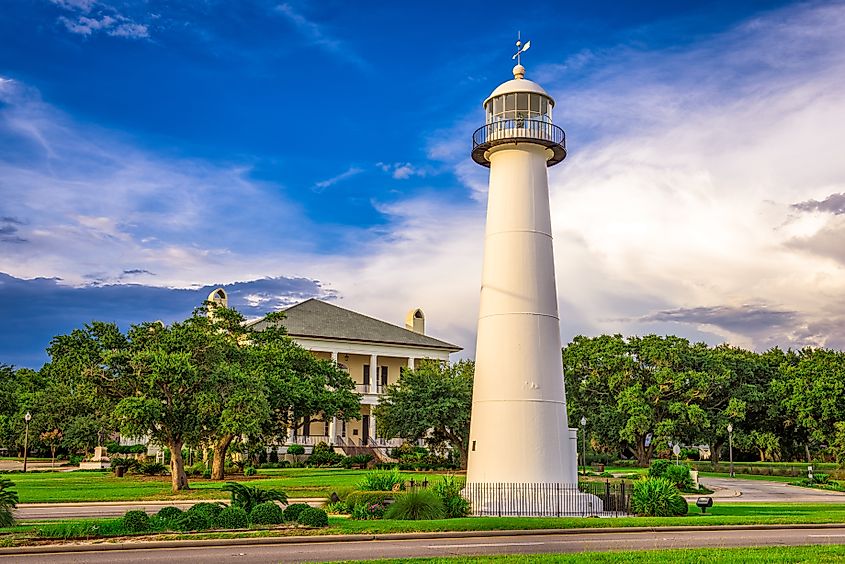
Biloxi, Mississippi USA at Biloxi Lighthouse.
Similar to Ocean Springs, Biloxi was explored by the French in 1699 and would serve as the second capital of French Louisiana from 1720 to 1723. Over time, Biloxi would become a center for vacations by rich southerners due to its luxurious hotels, great summer weather and casinos. The French influence on Biloxi is present in some of the architecture such as the 1832 Creole Cottage, a two-bay wide side-gable structure with French doors that first served as the town library. Biloxi was also a center for early Mardi Gras celebrations in America, which visitors can learn about at the Costal Mississippi Mardi Gras Museum. Speaking of the coast, the Biloxi Lighthouse was one of the first cast-iron lighthouses built in the South in 1848.
Port Gibson
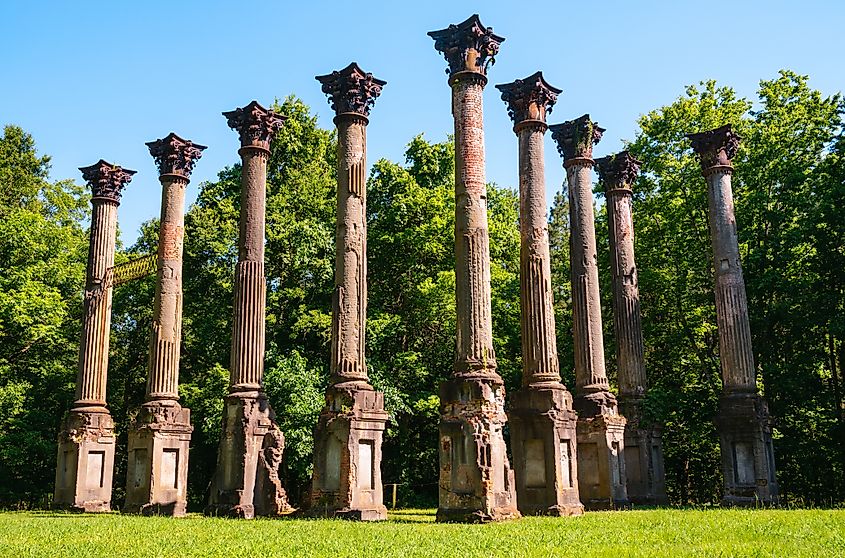
Windsor Ruins.
Port Gibson was settled by the French in 1729, making it the third oldest town in Mississippi. The United States would acquire the area in 1803 with the Louisiana Purchase. Allegedly the town was so beautiful that General Ulysses S. Grant said the city was “too beautiful to burn.” Regardless of the truthfulness of this claim, Port Gibson certainly is renowned for its beautiful architecture, both religious and secular.
One such place is the 1892 Gemiluth Chessed synagogue, the oldest synagogue in the state built in the Moorish Revival style with a keyhole doorway and windows. Also in town are the fascinating ruins of the 1861 Windsor Plantation at the Windsor Ruins and the Grand Gulf Military Park, the site of the Battle of Port Gibson in 1863. In the park, visitors can see a museum, a historic cemetery, and the Confederate Memorial Chapel.
Vicksburg
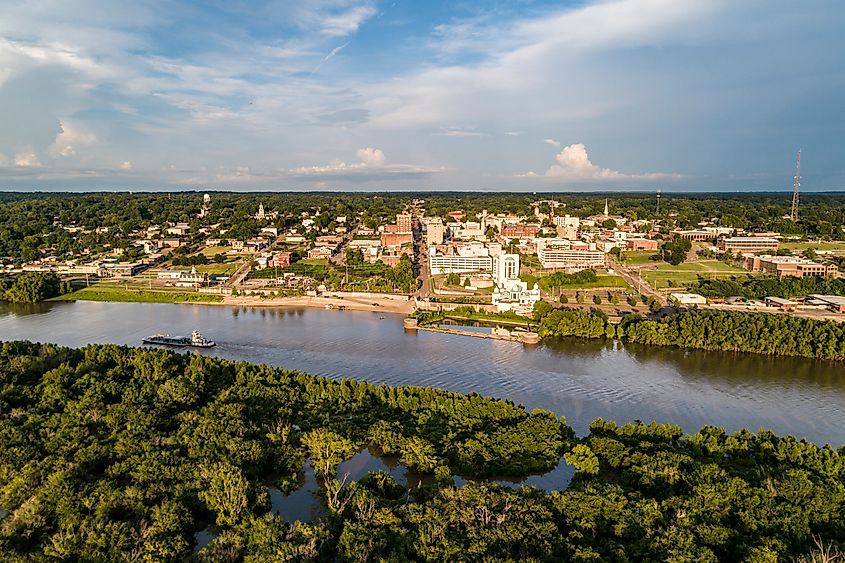
Downtown Vicksburg near the Yazoo Diversion Canal.
Founded in 1811, Vicksburg was a major center for riverboats due to its strategic location on the Mississippi River. This position was so significant that it was the site of a major battle in the American Civil War, the Battle of Vicksburg in 1863. The Civil War is baked into the town’s DNA, which visitors can see firsthand at the Vicksburg National Military Park, which features the USS Cairo ironclad ship and the 1830s Greek Revival Pemberton’s Headquarters, which served as the headquarters of the defense of the town.
The Civil War Museum in town has millions of artifacts from the war, while the Old Court House Museum has Confederate artifacts, antique furniture and Native American artifacts. The area also documents how the Mississippi River shaped life in Vicksburg at the Jesse Brent Lower Mississippi River Museum.
Columbus
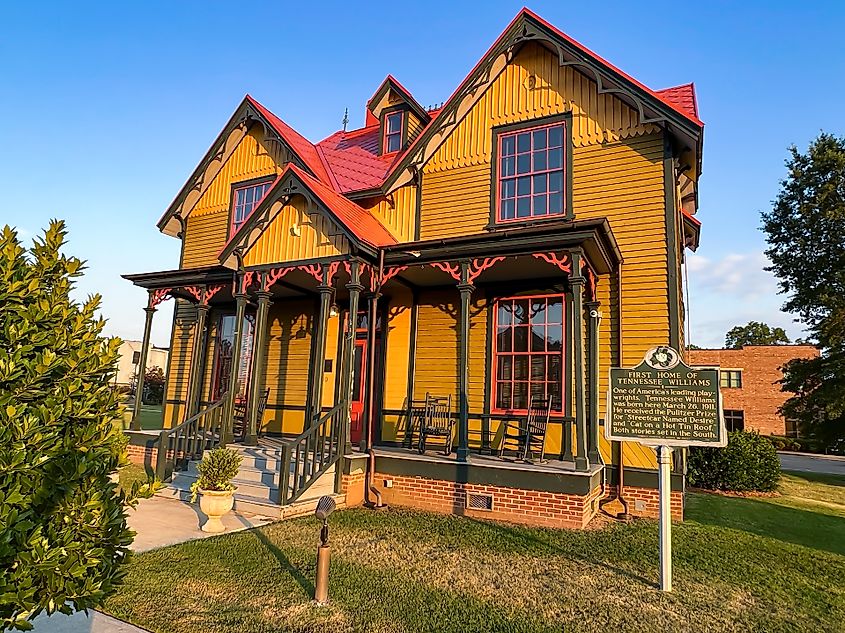
Columbus, MS: Birthplace of American playwright and screenwriter Tennessee Williams. Editorial credit: Chad Robertson Media / Shutterstock.com
The area of modern day Columbus was first explored by Spanish explorer Hernando de Soto who was looking for the legendary city of El Dorado. Columbus would see US settlers in the early 1800s with its official founding occurring in 1819. The oldest building in town is still standing—The Cedars built sometime between 1818 and 1830. It was originally a log cabin before being renovated into a gable style house.
The town itself is filled with historic mansions such as the 1843 Whitehall, a Greek Revival townhouse with six paneled columns and the Italianate style Stephen D. Lee Home and Museum built in 1847 for Confederate General Stephen D. Lee. This structure has a Roman bathhouse and contains several artifacts from the Civil War era.
Aberdeen
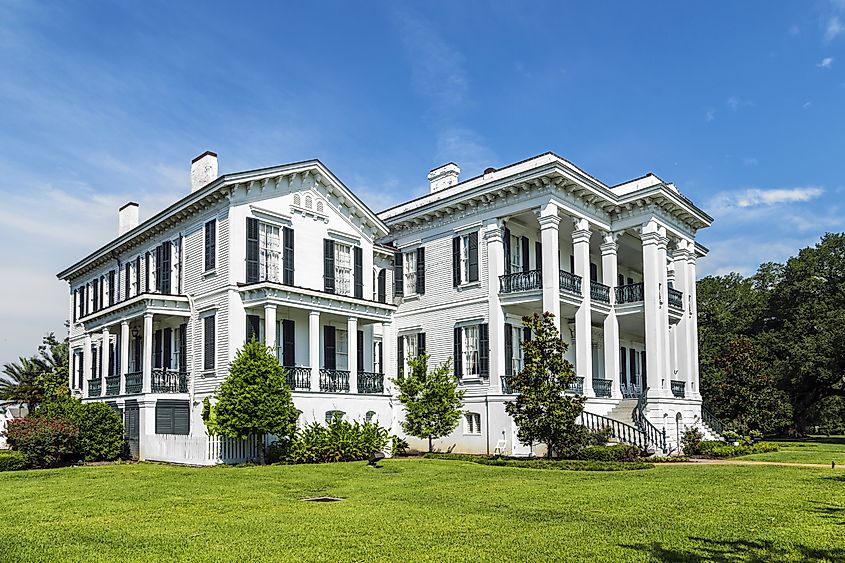
Historic Nottoway plantation in Louisiana from outside.
Much like Columbus, the area was first discovered during Hernando de Soto’s expedition in 1540. Aberdeen would officially be settled in the early days of Mississippi’s statehood in 1834. The town contains one of the best antebellum plantations in the state—The Magnolias constructed by Dr. William Alfred Sykes. This Greek Revival plantation has a column front portico, Waterford chandelier, and is surrounded by picturesque magnolia trees.
Also in town is the Reuben Davis House, a two story mansion built between 1847 and 1853 in the Greek Revival style. Reuben Davis himself was a major Mississippi author, as he published the history book "Recollections of Mississippi and Mississippians." The town also has some of the most beautiful graves in Mississippi at the Old Aberdeen Cemetery, which contains the graves of several Civil War veterans and original pioneers.
Natchez
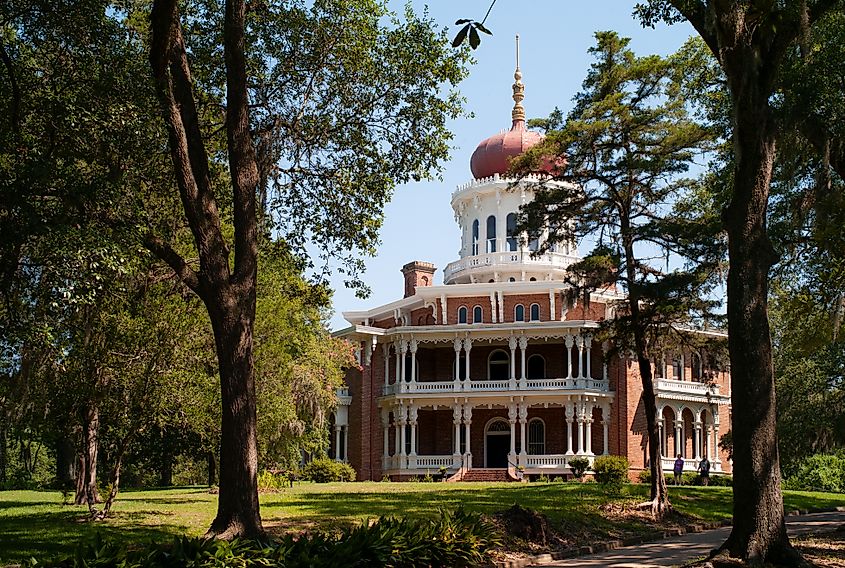
The French would establish this town as a fort on the Mississippi River in 1716. It would later serve as the first state capital for Mississippi in 1817. Unlike many towns in Mississippi, it was spared by the ravages of the Civil War, which means it has more historic buildings than almost any other town in the Deep South. For example, Longwood, built in 1859 is the largest octagonal mansion in the United States and features a Byzantine style dome. There are multiple well preserved antebellum mansions in Natchez such as the 1845 Melrose Greek Revival mansion. Natchez was also the site of several Native Americans groups, which left their mark at the Grand Village of the Natchez Indians, which has three mounds built by prehistoric Natchez Native Americans.
The Takeaway
The Magnolia State of Mississippi has plenty of Southern charm which is reflected in these historic communities. Within these communities hide Native American mounds and picturesque buildings that reflect the wide diversity of architecture styles of the Old World ranging from Greek Revival to Moorish styles and others. Visitors here will learn a lot both about early American settlements and Civil War history. These Old-World towns in Mississippi are perfect for a history buff looking for a weekend getaway.











